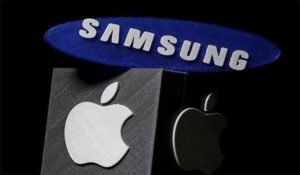
Jurors tacked on an additional $5 million in damages for a pair of patented functions. The award appeared to be a bit of a victory for Apple, which had argued in court that design was essential to the iPhone.
The case was sent back to the district court following a Supreme Court decision to revisit an earlier $400 million damage award. The jury essentially split the difference between Apple’s request for $1 billion and Samsun’s argument for $28 million.
To arrive at a damages award of more than a half-billion dollars, jurors would likely have needed to buy into Apple’s reasoning that design was so integral to the iPhone that it was essentially the “article of manufacture.”
The lower figure sought by the South Korean consumer electronics titan would have involved treating the design features as components.
The jury had been asked to determine whether design features at issue in the case are worth all profit made from Samsung smartphones that copied them or whether those features are worth just a fraction because they are components.
“Samsung isn’t saying it isn’t required to pay profits,” Samsung attorney John Quinn said during closing arguments on Friday.
“It is just saying it isn’t required to pay profits on the whole phone.”
Apple argued in court that the iPhone was a “bet-the-company” project at Apple and that design is as much the “article of manufacture” as the device itself.
The three design patents in the case apply to the shape of the iPhone’s black screen with rounded edges and a bezel, and the rows of colorful icons displayed. Samsung no longer sells the smartphone models at issue in the case.
Two utility patents also involved apply to “bounce-back” and “tap-to-zoom” functions.
The case dates back seven years. An original trial finding that Samsung violated Apple patents was followed by lengthy appellate dueling over whether design features such as rounded edges are worth all the money made from a phone.
Technology vs Style Samsung challenged the legal precedent that requires the forfeiture of all profits from a product even if only a single design patent has been infringed.
The US Supreme Court in 2016 overturned the penalty imposed on the South Korean consumer electronics giant.
Justices ruled that Samsung should not be required to forfeit the entire profits from its smartphones for infringement on design components, sending the case back to a lower court.

